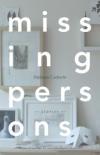My AAS fellowship supported research toward Many and Wide Separations: Two Novellas. The two works in this diptych both center on fictional female artists in mid-nineteenth-century New England. In summer 2020, I finished a full draft of the manuscript—now grown to two short novels—and I plan to begin shopping the manuscript soon.
At AAS, I focused on the title novel, Many and Wide Separations. The piece considers Margaret Fuller’s legacy, not as crafted by Ralph Waldo Emerson and other male intellectuals in her circle, but as felt by one of the female students Fuller taught early in her career, at the Greene Street School in Providence. AAS holds several of the school journals kept by these young women; those artifacts and related materials in the collection informed my sense of who the students were, and how they responded to Fuller’s innovative pedagogy in the late 1830s. My invented character is inspired by these young women, the daughters of Providence’s merchant class.
By the time of Fuller’s death by shipwreck in July 1850, my protagonist’s circumstances have changed. She’s left the comfortable, conventional home of her youth and is working as a daguerreotype colorist, in a studio in Boston. The mirror-like beauty of daguerreotypes, their capacities for art and artifice, and the danger of their creation are essential to my piece. AAS’s daguerreotypes holdings and instruction manuals were invaluable to me, as I imagined the painstaking and almost imperceptible art of adding color to these images. During my month in residence and on subsequent short visits, I drew upon a wide variety of other materials, including Boston street directories, train tables, women’s magazines, and almanacs. As my project took shape and the story’s timeline solidified, AAS’s newspaper collection became my most important source of inspiration. A newspaper animates everyday life, demonstrating the simultaneity of events and issues that might be considered separately in secondary sources. Reading Boston newspapers from summer and fall 1850 helped me to more fully conceptualize that time and place. Focused as my research had been on Fuller, early photography, and women’s lives, it took the newspaper to remind me of the major political changes taking place that summer and fall, as the Fugitive Slave Act was debated and passed—and the president dropped dead of cholera. All of these shifts in my character’s world inform her response to Fuller’s death, and shape her actions in the course of the novella.
When I write historical fiction, I tend to start with subjects I find fascinating, and see whether and how I can connect them. “Many and Wide Separations” combines my interests in Margaret Fuller and early photography; the companion piece, “A Passing Likeness,” is about portraiture and Shakerism. My fellowship at AAS helped me to situate my fiction more firmly in daily life, which I find to be the most fruitful and surprising generator of stories.
